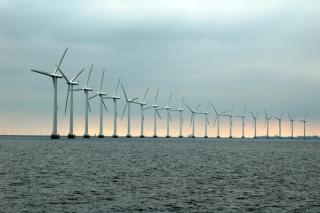
Cultural heritage: Indigenous and cultural heritage values driving sustainable development
by Flavia Kiperman
View post

Offshore wind energy projects are an emerging source of electricity that will help secure Australia’s future energy needs. When coupled with energy storage resources, they are designed to replace our traditional reliance on fossil fuels with emissions-free energy, thereby contributing to the decarbonisation of our economy. The SLR Consulting team will be at the Australian Offshore Wind Energy Conference in Melbourne this week (15-16 Nov 2022), where we look forward to connecting with our offshore investor, developer and supply chain clients in the Australia-Pacific region.
When appropriately managed, the environmental impacts of offshore wind energy projects are mitigated through scientific evidence-based technical assessment coupled with an-depth understanding of the engineering technologies and a fit-for-purpose approach to risk analysis. Prior marine project team experience relevant to offshore project infrastructure within the local jurisdiction is also a critical success factor. Many of SLR’s Marine Science team of 20 plus technical specialists have extensive experience with environmental monitoring, assessment, permitting and compliance in Australia’s coastal and offshore waters where wind farm development is currently being proposed. This experience lends itself to expertly navigating Australia’s new Offshore Electricity Infrastructure Regulations 2022 coupled with the State and Territory policies that are evolving in parallel. Our primary objective is to help our clients navigate the multi-level, multi-stakeholder regulatory environment as efficiently as possible.
SLR is involved in all stages of the renewable energy project lifecycle, from initial concept and technology selection through to decommissioning and rehabilitation. At the front end for offshore wind development, obtaining a Feasibility License is one of the first steps that proponents/developers need to make towards generating that first MWh of electricity from a prospective wind farm. Once the Feasibility License is in place it remains valid for 7 years – during which time, the site suitability and impact on the environment and existing marine uses and users need to be demonstrated.
During the feasibility stage, considering the imperative of speed to market, there are several project studies that SLR recommends proponents undertake in parallel to an area being formally declared “open” by the Commonwealth for offshore wind development. These studies are planned out by SLR on a project-by-project basis, to ensure unnecessary expenditure is avoiding at this early prospecting stage. Furthermore, our approach to quantifying the project site suitability and impacts is balanced with quantifying the project benefits, e.g., GHG emissions reduction for the electricity grid and potential conversion of offshore infrastructure to new reef environments after de-commissioning. We see this approach as being critical to communicating an accurate message to all stakeholders involved.
Here are some key reasons to consider us:
We are known and respected by regulatory officials responsible for the assessment of marine projects at both Commonwealth and State levels of government. Our reputation for applying best practice techniques and rigorous analysis is demonstrated through our 10+ year project experience in Australian marine environments.
We are technology agnostic and often provide our environmental services independently from others in the project supply chain. This has the advantages of providing our investor and developer clients with clarity on the potential environmental impacts without undue influence from third party interests.
The Australian offshore wind market is following in the footsteps of offshore wind development in other global regions, including Europe, Asia and North America. SLR’s wind farm experience in these other regions means that we’ve learned lessons that will now be advantageous to our clients in the Australia-Pacific region.
Our environmental services not only cover marine-based project infrastructure, but also the associated onshore infrastructure required to support and inter-connect offshore wind farms for their construction and ongoing operation and maintenance. This includes experience with port facilities and the permitting of all portside infrastructure (e.g., blade assembly shops, maintenance facilities). Our experience and competencies are also relevant to all participants in the supply chain who require expert environmental management, permitting and planning services. We offer consulting services in all the technical specialist and environmental management areas of relevance to offshore wind project development in Australia and New Zealand. These services include:
First and foremost, we want to deliver the best project outcomes for our clients. This means the SLR team is always willing to partner with other consultants and contractors where and when it makes sense to do so. We will take the lead on some projects, and for others, we will be a team player and follow the lead of others. We tailor our scope of services specifically for each project to meet our clients’ needs.

by Flavia Kiperman

by Jasper Schrijvers , Matthew Hoare

by Clodagh Connolly, Nicola Inge, Andres Schottlaender